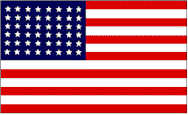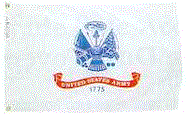

On October 25 and 26, 2003, the Army Ground Forces Association (AGFA) hosted
the 2nd Annual "Coast Artillery Open House" in conjunction with the
National Park Service at Battery Gunnison/New Peck, Fort Hancock, NJ. The objective
of the event was to provide interpretation of the Coast Artillery mission of
Fort Hancock in the World War Two era.
The members of AGFA participating were John Lassiter, Mike Murray, Shawn Welch, Jonathan Prostak, Andy Grant, Rob LaBerta, Steven Turner, Larry Winchell, Gary Weaver and Andy Bennett. AGFA was supported in this effort by Bolling Smith and Chris Zeeman of the Coast Defense Study Group (CDSG). Interpretation, including uniforms and equipment, was designed to present a view of the Coast Artillery at Fort Hancock in October of 1943.
This event was extremely significant as it was the "unveiling" of Battery Gunnison/New Peck after initiation of a major restoration effort. This initial work took several months and involved four major areas; (1) cleaning and painting the interior of the battery (2) installing the fire control telephone cabling (3) cleaning and painting both guns (4) installing electricity and lighting (done by the National Park Service).
The event began for those who were participating on Thursday, 23 October. We
downloaded equipment, assembled displays, and established ourselves in post
billeting, much as a mobilizing unit would have done at Ft. Hancock at the start
of the Second World War.
The next day dawned early, and after chow we promptly headed over to the battery
to finish setting up for the weekend. We obtained special parts from the Post
Storehouse, including the breechblock for the #2 gun. At the warehouse we were
treated to other special artifacts to include a plotting board, fire control
instruments, and a fairly large collection of minor and major caliber shells
from the Sandy Hook Proving Ground.
|
|
These shells were in various states of "damage" from munitions testing.
These shells ranged in size from 3-inch to 12-inch. The National Park Service
preservation expert Mary Rasa is preparing these shells for later display and
interpretation at the park.
Once setup at the battery was completed we proceeded to tour some of the post
as many of the attendees had never been to Fort Hancock before and needed to
see the sights. We conducted this tour in full uniform as "walking advertisements"
for the following day.
The first stop was the proof battery where we toured the gun blocks and gantry
tracks as well as the proof block for Fort Drum's 14-inch turrets. From there
we headed up to "Nine Gun Battery" which is actually four separate
batteries in one contiguous gun line. We only explored the two southern most
batteries, Bloomfield, 2 X 12-inch DC and Richardson, 2 X 12-inch DC. From there
we proceeded to Batteries Kingman and Mills (2 X 12-inch BCLR each, casemated).
Next we toured Battery Potter and then the mortar battery (Batteries McCook
and Reynolds), which served as the HDCP during WWII. We finished up at Battery
Granger as the sun was setting and returned to our quarters for dinner. As with
so many of our events, we re-confirmed that Coleman lanterns are the preferred
lighting using two Coleman 220 and two 242B lanterns from the 1930 through 1944
era.
The next day we arrived at Battery New Peck (Gunnison) at 0800
and turned on the power and equipment. The public started arriving and continued
through the day in small groups of four or five people. During the course
of the day, members worked on installing and improving functionality of the
breach block.
Our displays were set up in four major focus areas. We had the # 2 gun set
up for armament interpretation. Tools such as rammers and cleaning equipment
were on display.
Continue to Fort Hancock, Page 2
Upcoming Events |
Past Events |
Order of Battle |
Contact Information |
Quartermaster |
Links |

